Peak summer can be hot and muggy in the Midwest. It's the perfect time to make homemade staghorn sumac lemonade, which is basically infused sumac tea. Ice cold, tart and refreshing, this is a classic recipe foragers of any age and skill level can make. While it's one of the easiest things to make, there's a few tricks to making a really good version that might surprise you.
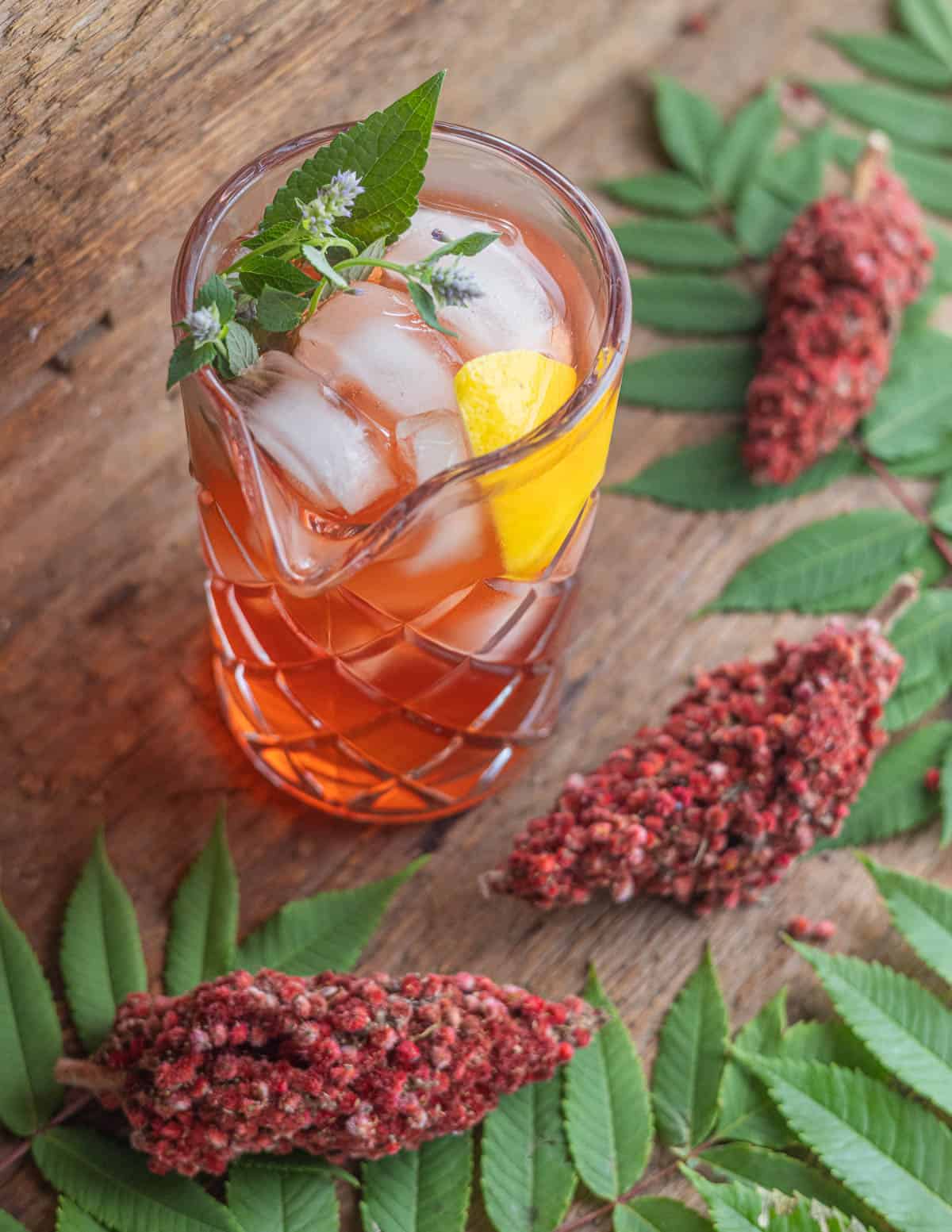
Chef's Tips
First, you want to make sure you have staghorn sumac (Rhus typhina) and not poisonous sumac (Toxicodendron vernix). An easy way to tell the plants apart is that poison sumac has white fruit, where staghorn sumac has attractive, red clusters of fruit that are densely packed.
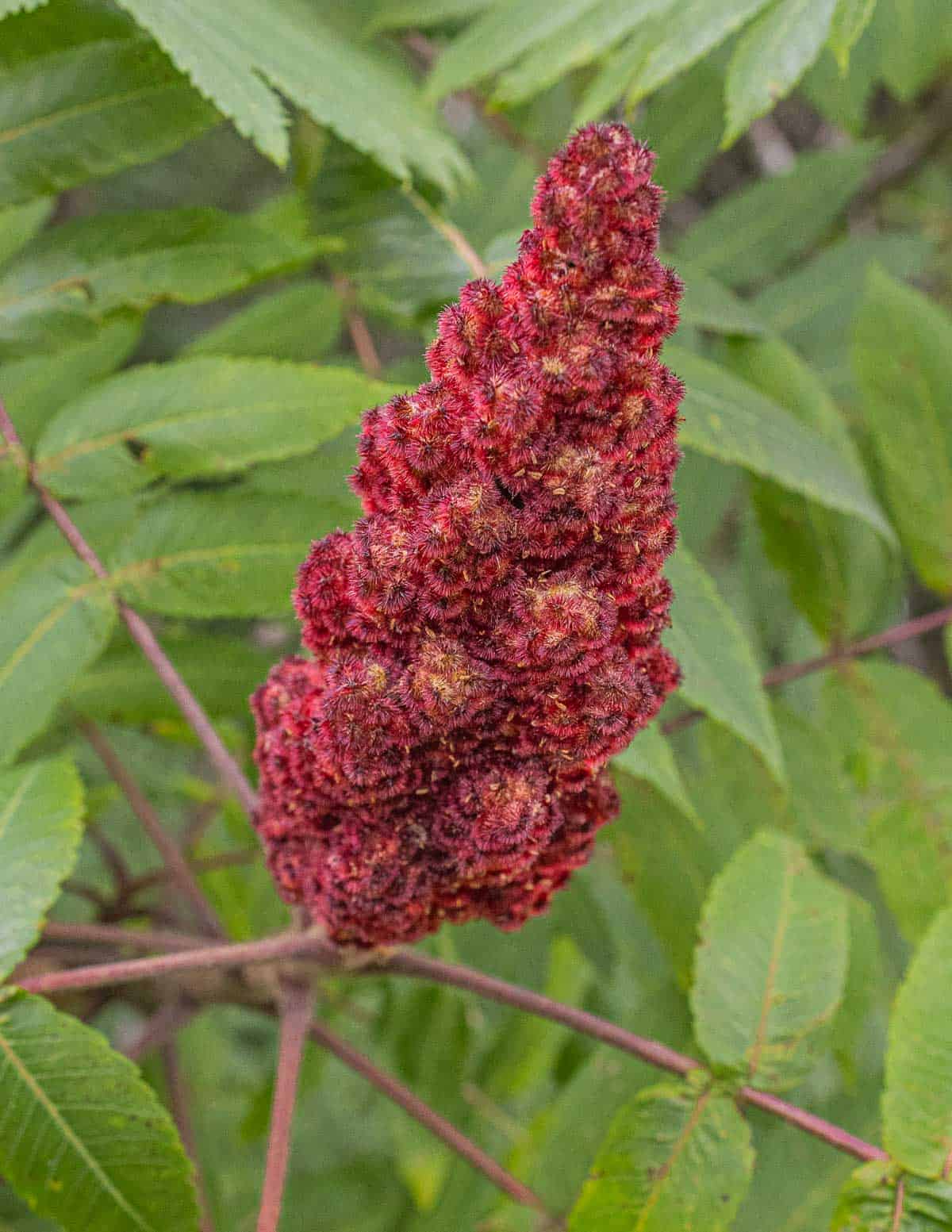
The sour taste of staghorn sumac comes from an acidic coating on the seeds. I've heard people say it's malic acid, ascorbic acid, and a mix of acids. Whatever's on them, it's very sour. The acidic coating is easily rubbed off on your hands and can also be washed off by the rain.
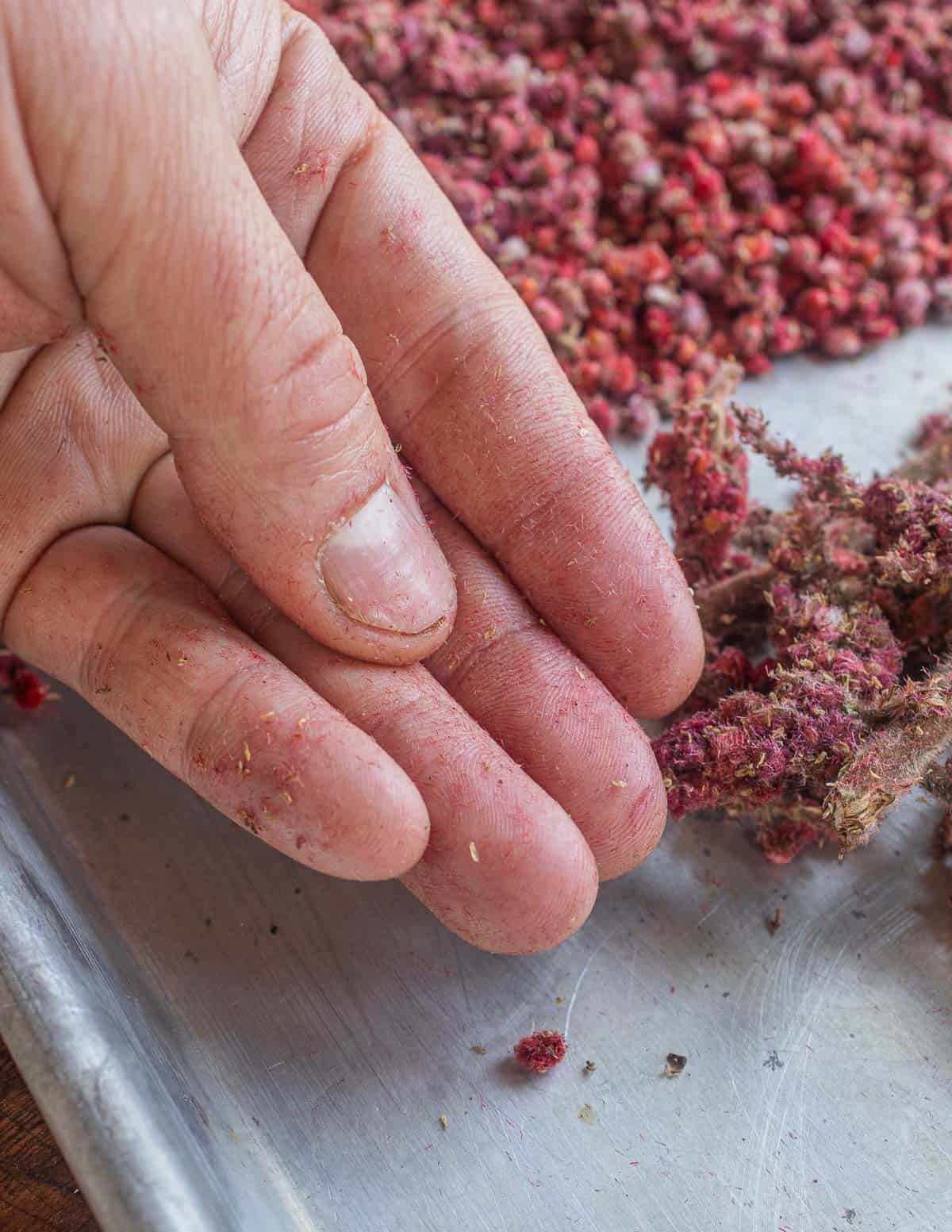
It also means that if you have cuts on your hands you'll want to handle the clusters of fruit with gloves. Possibly the most important thing to know is that you want to avoid clusters that look washed out as in the infographic below.
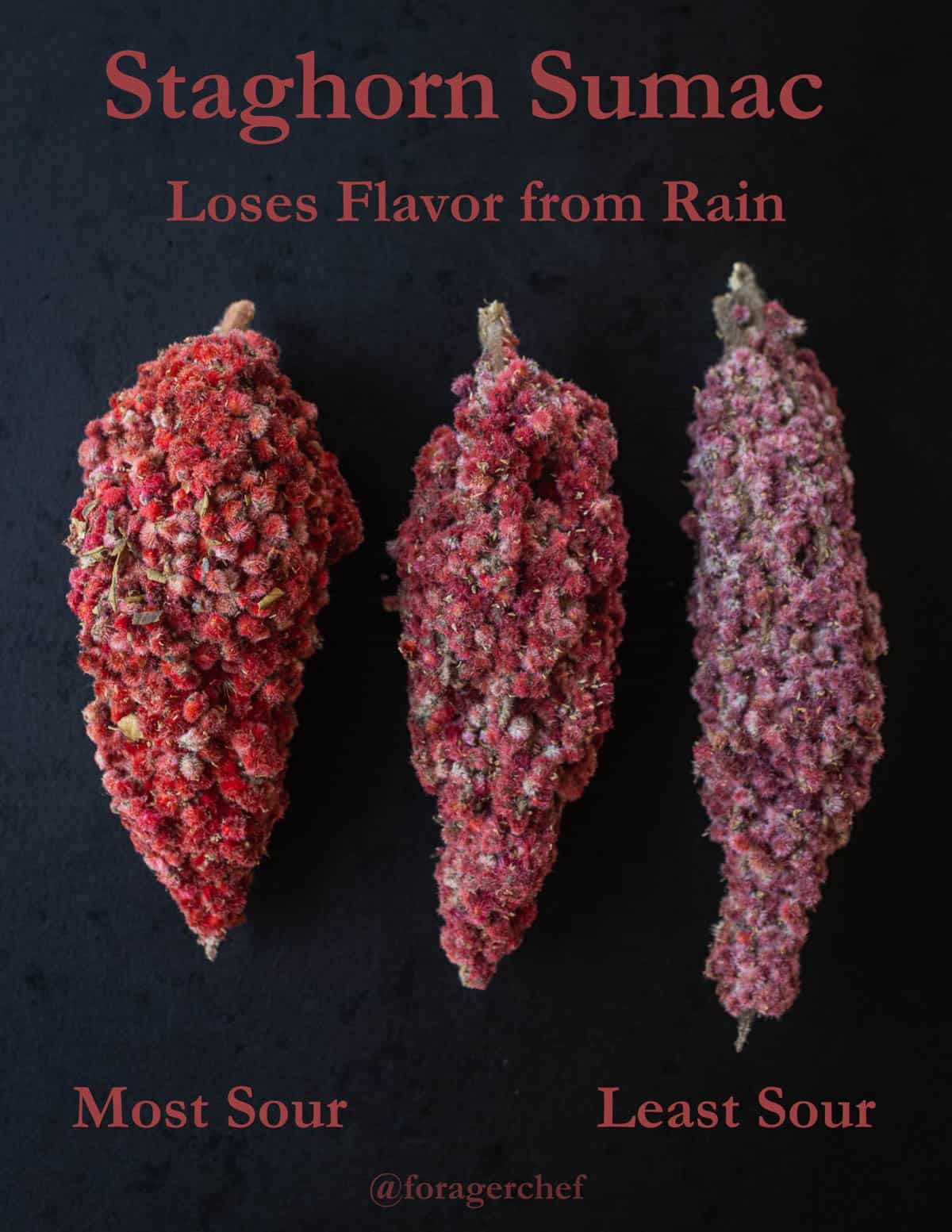
Taste both the outside fruit, and those from the inside to make sure they're very sour for the best result. Following that, the seed clusters should never be washed before making lemonade.
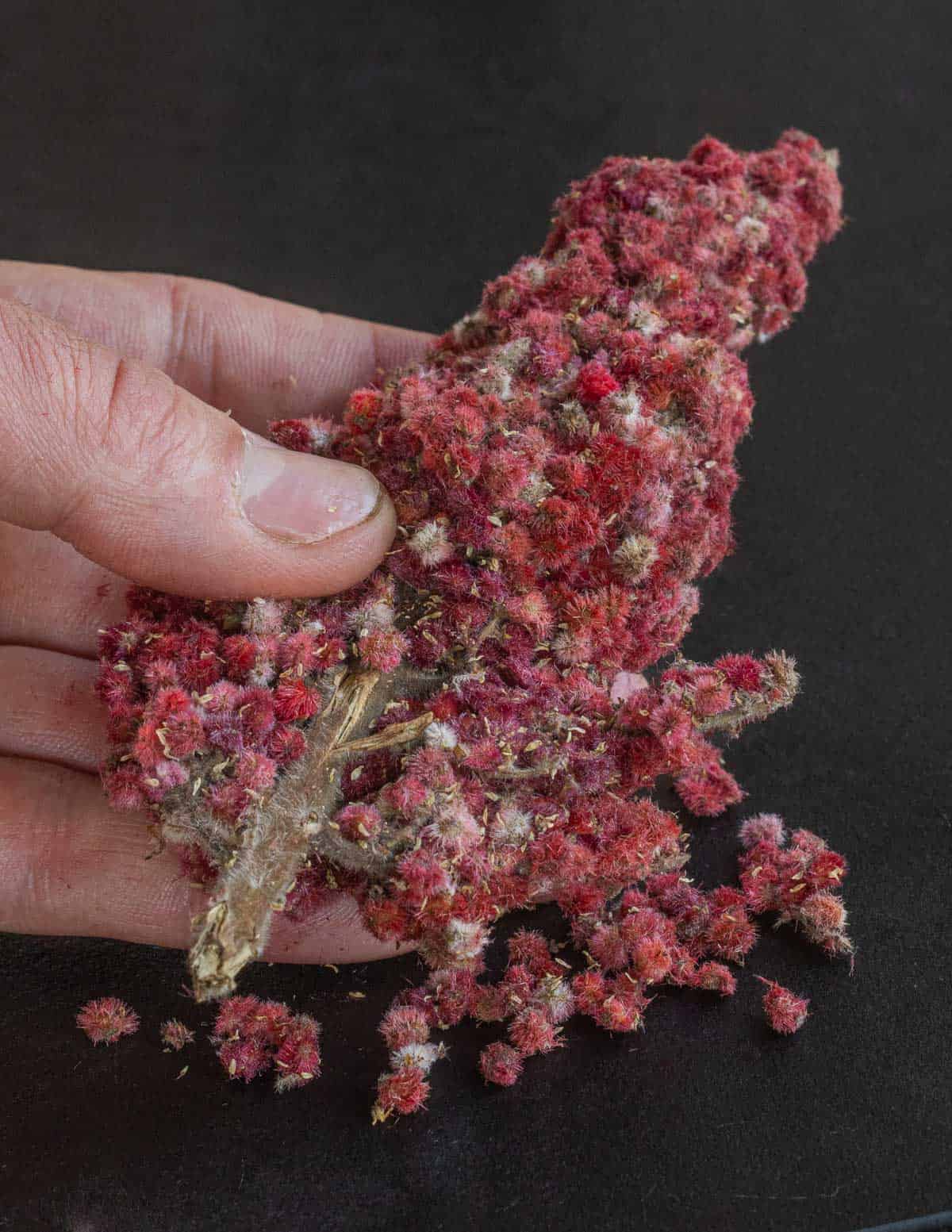
Sumac lemonade is made from a cold infusion. It should not be made with boiling water or by cooking the seed clusters. Cooking the clusters of fruit will make the drink unnecessarily astringent, ruining it, in my opinion.
If you want to make instant lemonade you can pulse the seeds and water with a hand blender. The tradeoff is using a hand blender will bring out a little astringency, but nowhere near as much as cooking the fruit. It's a good trick I learned from my friend Lorenzo.
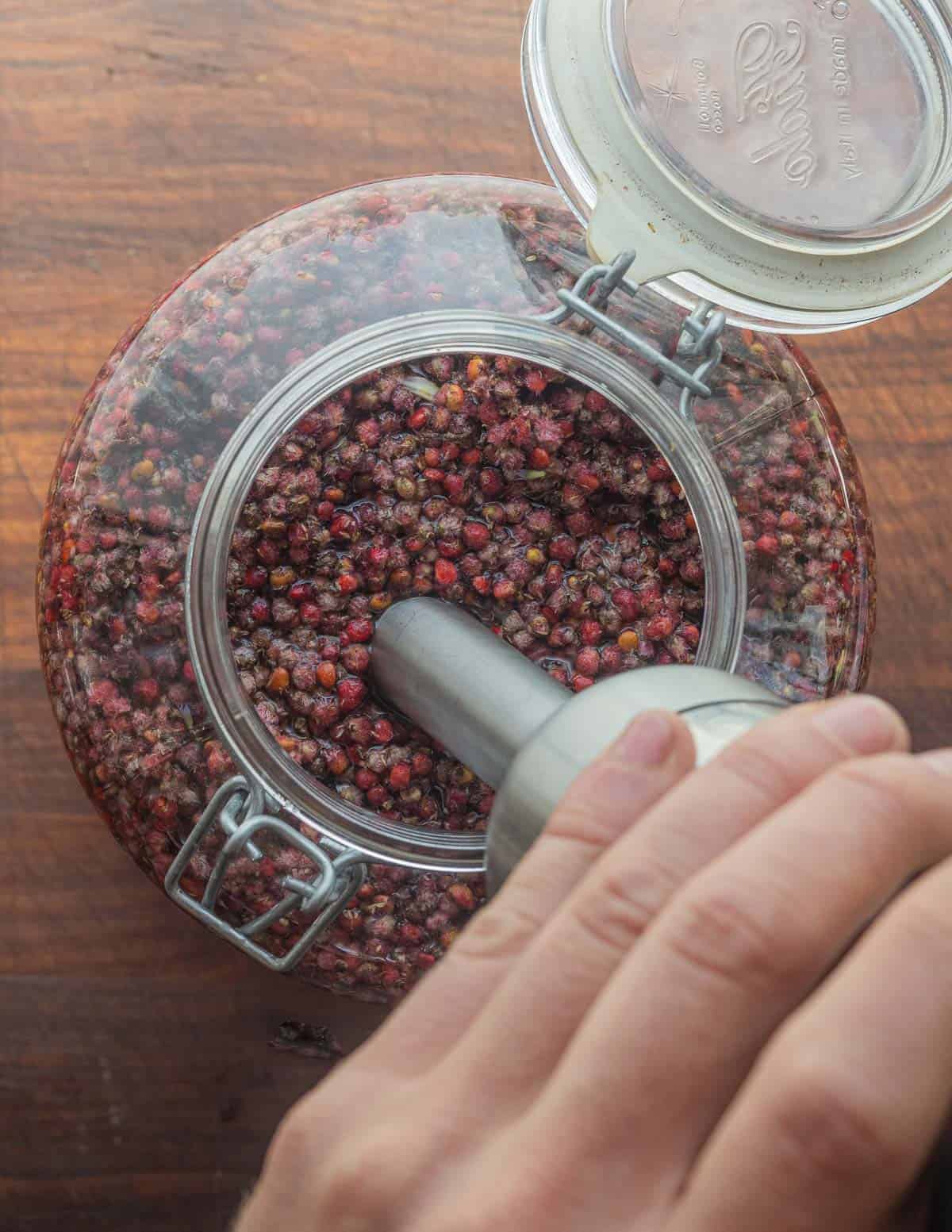
Lastly, staghorn sumac is related to mangoes and cashews, so people who are allergic to those plants are at a higher risk of being allergic to sumac.
How to Make Staghorn Sumac Lemonade
First the sumac clusters are broken up and the seeds are removed. While some people will simply put the whole clusters in water, this won't give the strongest tasting result as the inner seeds (which can be some of the most sour) have less contact with water. I like to remove the stems by hand, but you can also cut the seed clusters up with a scissors to make it easier.


The image below shows sumac lemonade after 24 hours made 3 ways: picked seeds, whole clusters and sumac powder. The darkest color and flavor is from seeds removed from the stems.
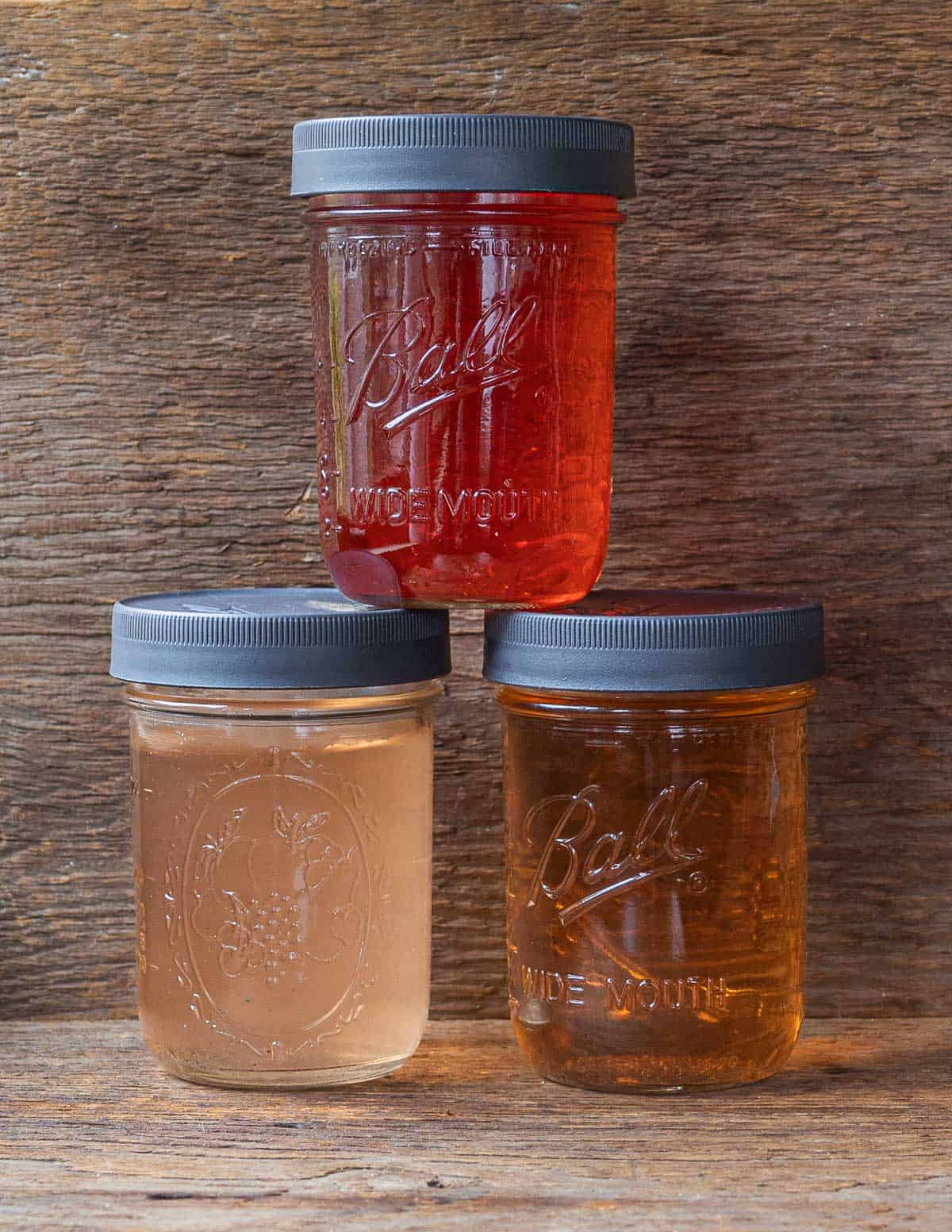
To make the infusion the sumac seeds are mixed in a container with cold water. I like to add aromatic herbs like anise hyssop, lemon balm, or mint to add flavor. You'll leave the sumac lemonade out on the counter or in the fridge overnight, stirring occasionally to help release the acidic coating from the seeds.
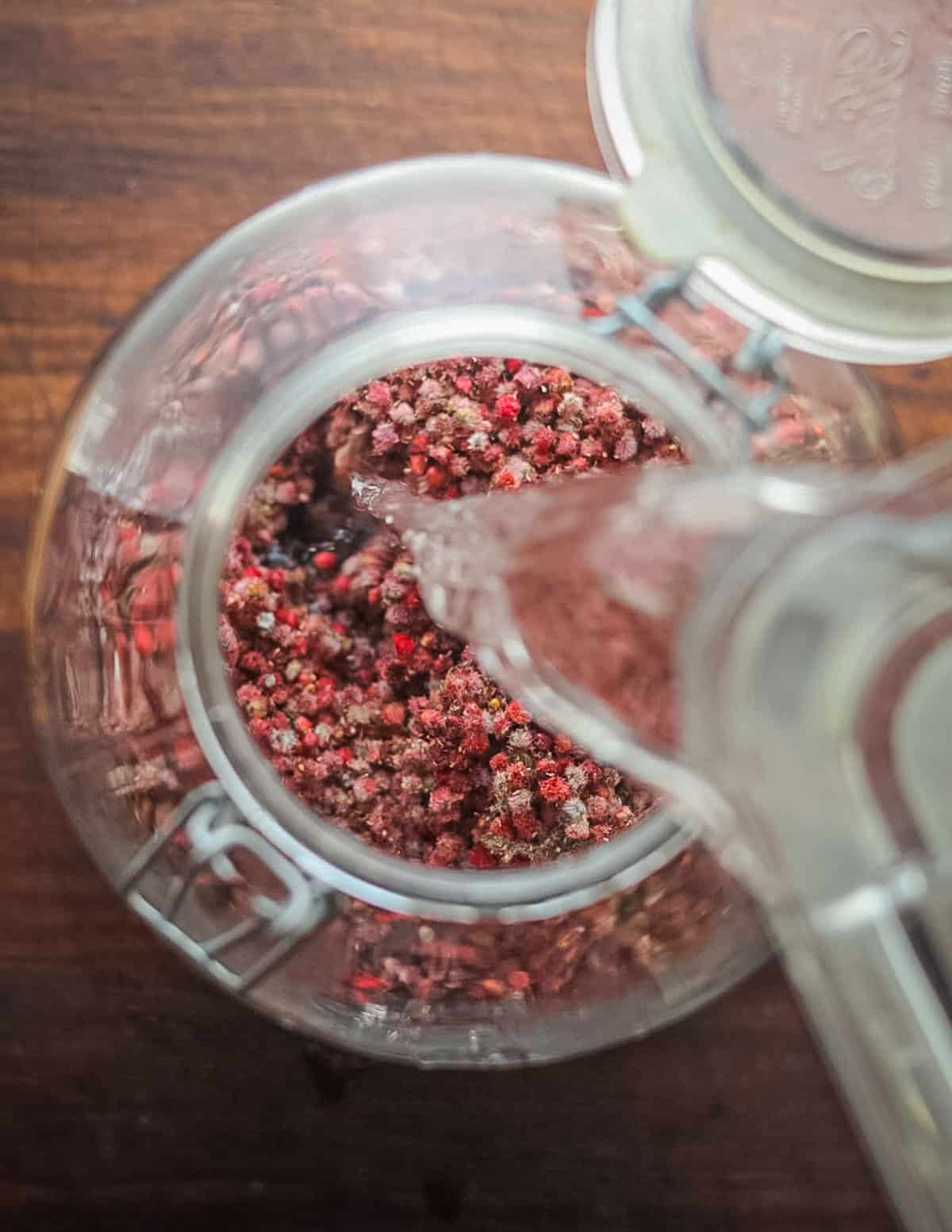

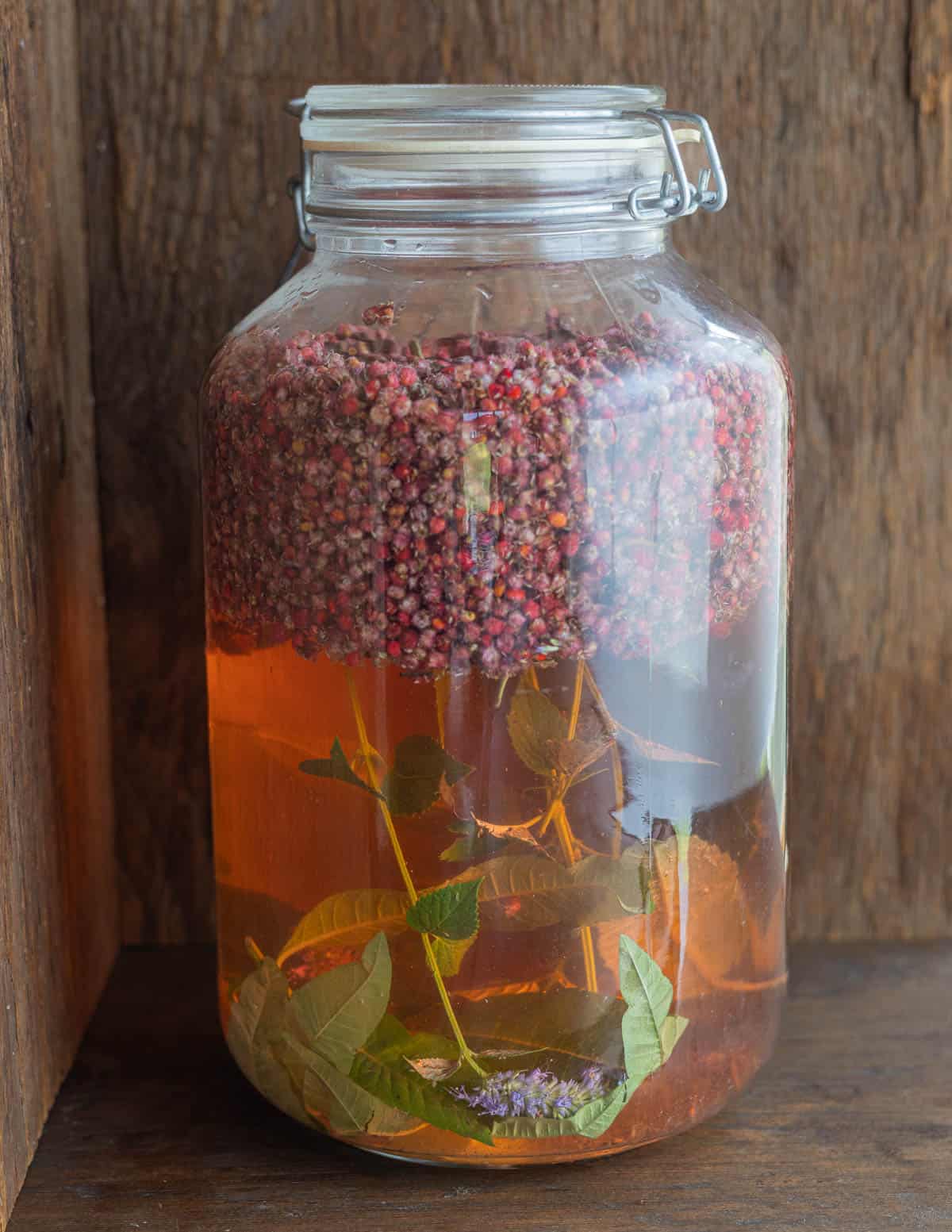
Next taste a spoonful of the lemonade. If you want it more sour, add some extra sumac seeds. After 24 hours the lemonade is strained. You want to use cheesecloth or a very fine mesh strainer here to ensure that none of the small, irritating hairs are left in the lemonade.
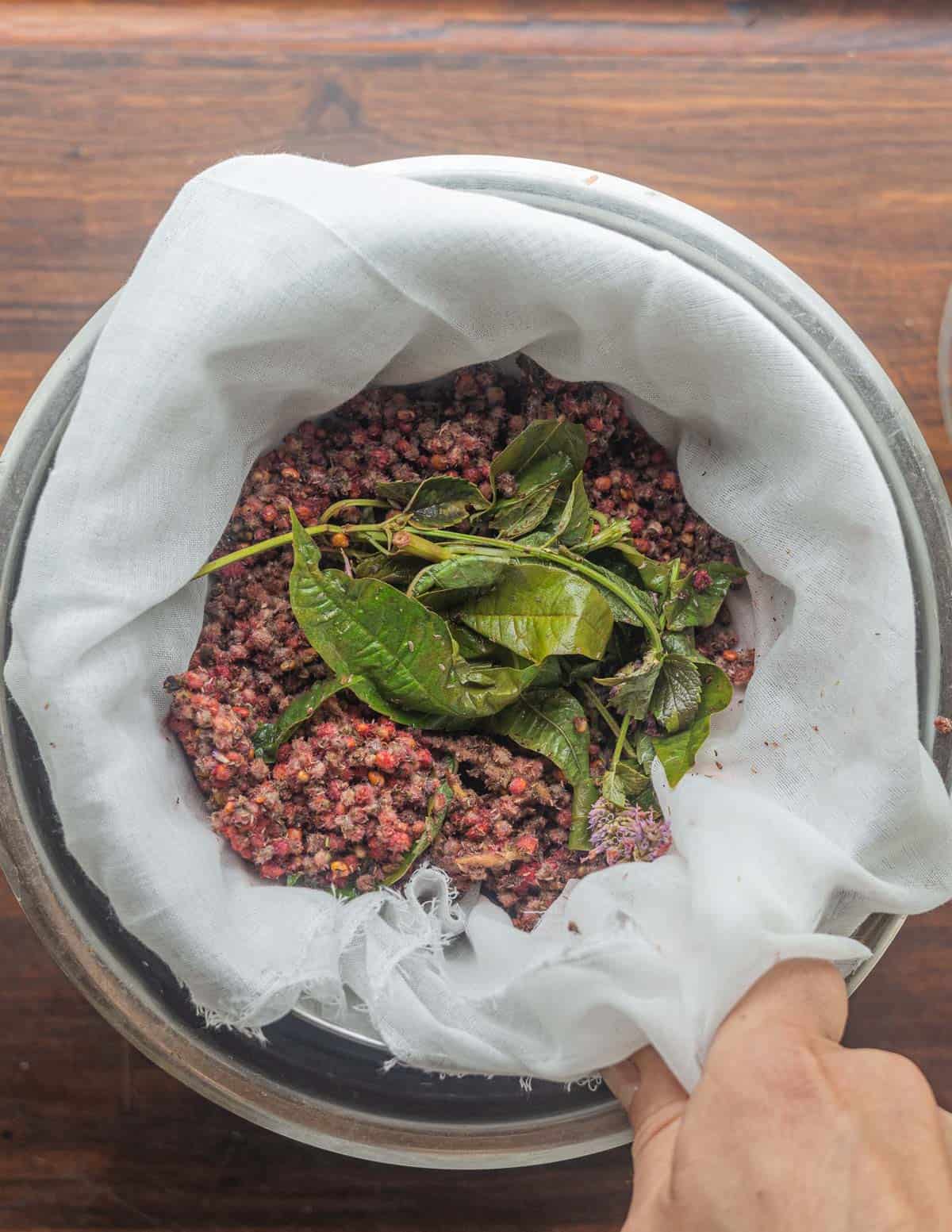
After straining, pour the lemonade into a large container like a gallon mason jar. Sweeten it with maple syrup, sugar or honey and a small amount of fresh lemon juice. You can also add more herb sprigs for flavor and an attractive look.

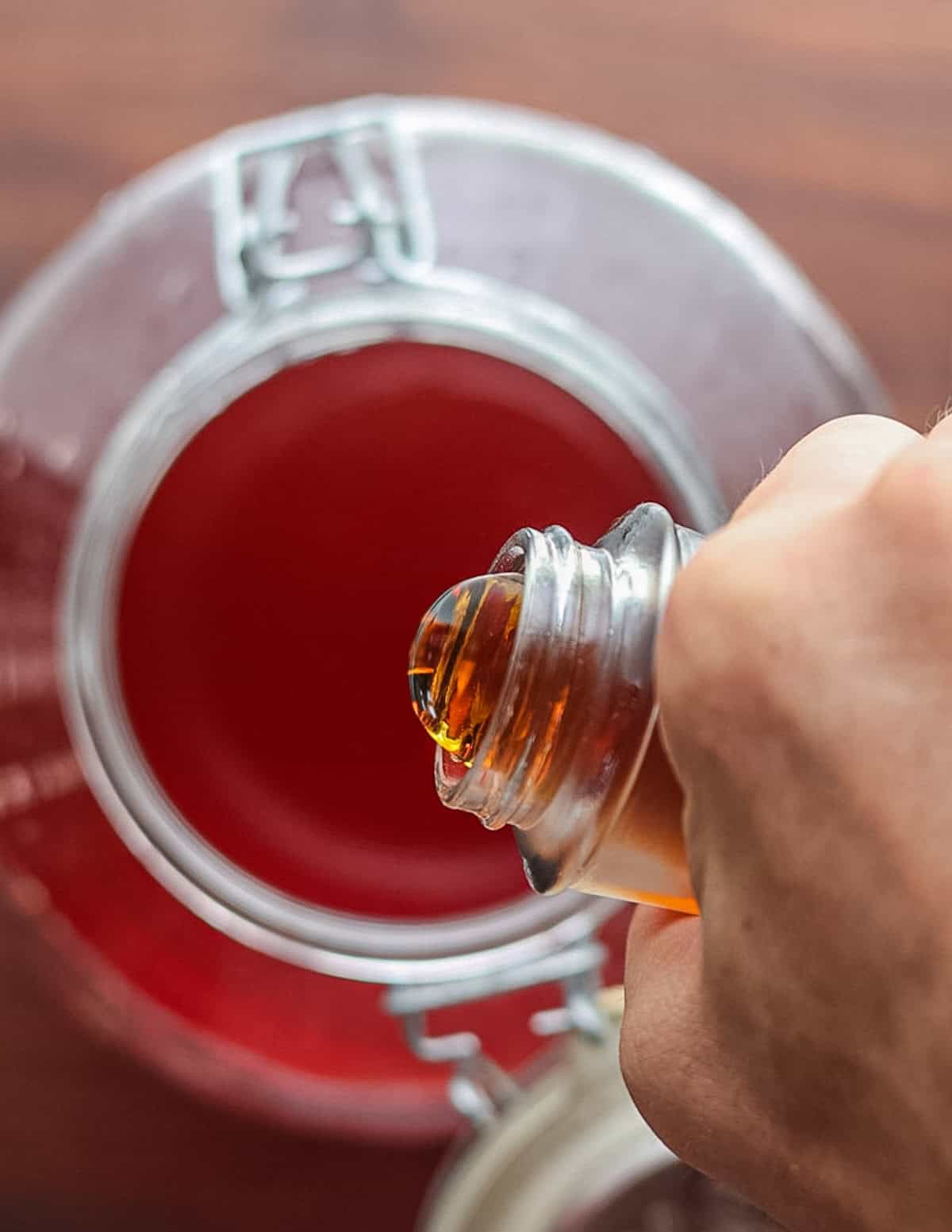
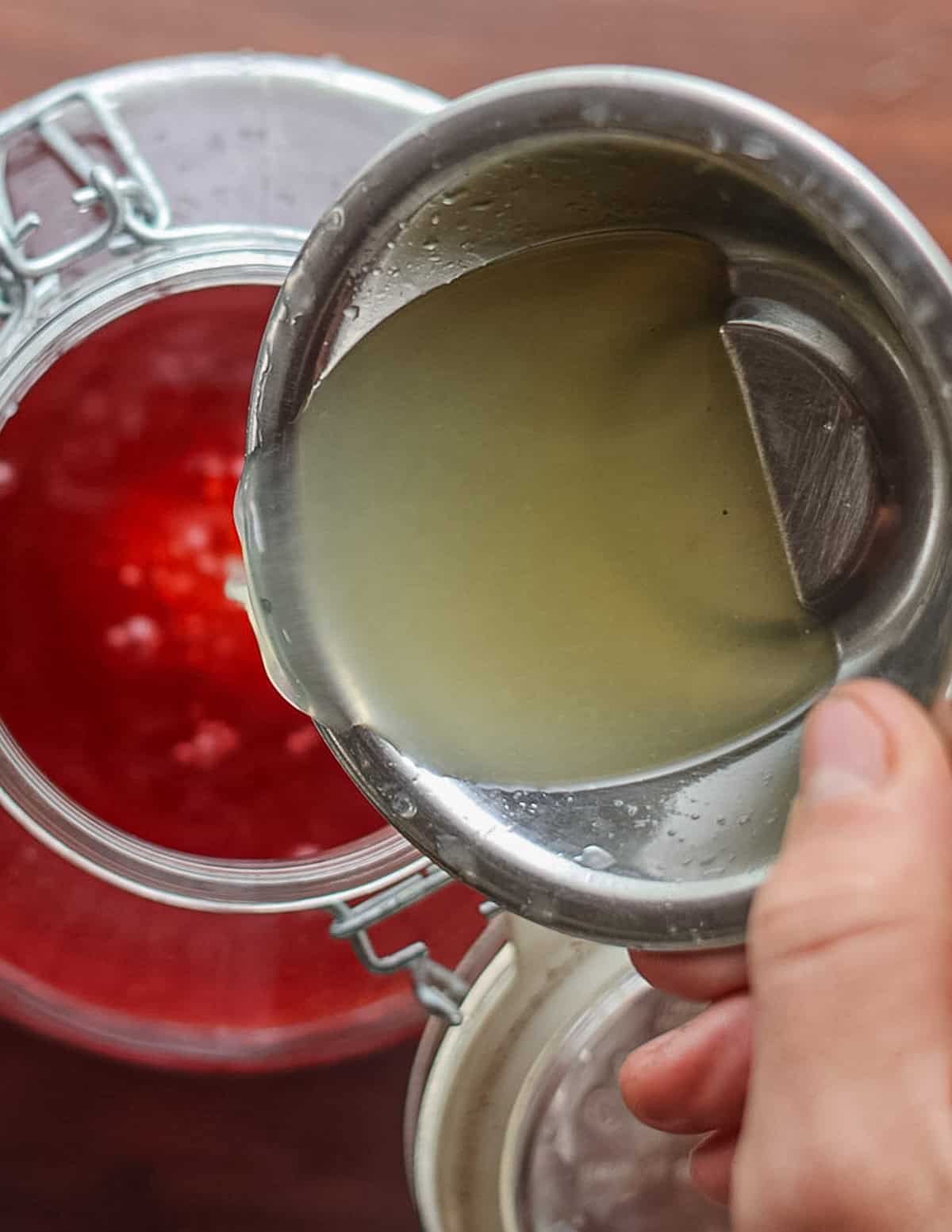
Chill the lemonade and serve it on ice with a few fresh herbs stuck in the glass to garnish.

Do you make sumac lemonade? Feel free to drop any tricks or advice you have in the comments.
Related Posts
Staghorn Sumac Lemonade (Overnight Tea)
Equipment
- 1 Large container for holding the tea 1-1.5 gallon capacity
- 1 Cheesecloth for straining
Ingredients
- 4 qts water
- 5 cups fresh sumac seeds or whole cut up clusters
- 3 sprigs fresh anise hyssop or mint to taste
- 1-2 cups maple syrup or honey to taste
- 2 large lemons (roughly ½ cup of juice) for juice and garnishing
- Ice as needed for serving
Instructions
- Combine the sumac seeds and water in a large container and mix well with a whisk to help agitate them.
- Crush the herbs gently in your hand, push them underneath the floating sumac seeds and stir well.
- Leave the sumac and water out at room temperature or refrigerate it overnight, stirring vigorously a few times during the process, whenever you can remember.
- The next day, taste the sumac. It should be pleasantly sour. If you want it more tart, add another cup of berries, stir well and allow to infuse until you like the flavor.
- Strain the sumac lemonade through a double thickness of cheesecloth.
- Add the remaining ingredients and stir well. Taste the mixture and adjust the seasoning, adding more maple syrup or lemon juice as needed until it tastes good to you.
- You can also add more sprigs of fresh herbs to infuse the lemonade with more flavor.
- Refrigerate the lemonade and chill until needed. It will last for a week in the refrigerator.
Video
Notes
- One lightly packed cup of staghorn sumac seeds is about 35-40 grams and will flavor about 4 cups of liquid.
- Use the volume measurements in this recipe as sumac loses weight as it dries.
- Assume around 1-1.5 clusters of sumac per pint of liquid you want to flavor.
- While you can leave the lemonade out for a few days, avoid doing this after sugar has been added as it can cause the lemonade to ferment.


Bryanna
Hello. How might you go about creating a syrup with this, for cocktails and such? My worry is is that cooking or heating (eg. simple syrup style) it too much would damage its nice fresh flavor profile, but am not sure how else to approach it.
Alan Bergo
Hi Bryanna. I would make a 2:1 syrup. 2 parts very strong sumac liquid to 1 part sugar by volume.
Just mix the sugar and finished tea. You must warm it to prevent fermentation. After the sugar is added you could infuse it with more sumac, ideally ground.
Jaine Hayward
I've infused sumac as suggested and let it sit on the porch like a sun tea for 2 days. Strained it and froze it into ice cubes and that has kept me happily drinking a lovely flavored water all summer long! Just 2 cubes will elevate your hydration experience. 🙂
Alan Bergo
Thanks Jaine.
Rachel
Thank you for your time and talent. I am new to foraging, and love your educational posts, excellent pictures, and wonderful recipes! This is the first one I've tried. I made it twice, with a perfect first attempt. The second time, the berries were later in season and less red. The astringency was mild with less of a lemon note, and more on the raspberry side, to which I decided to add raspberry leaves. Both versions were refreshing and tasty. It's amazing that we are surrounded by food and yet so few people even know what's growing all around them! Thank you again.
Alan Bergo
Thanks Rachel.
Dalena
I any tips for cleaning of bugs? My kids and I picked a some today to try your recipe and they were full of bugs in the middle. Normally we’d just wash them but you mentioned washing the berries would get rid of all the great flavor and sourness
Alan Bergo
Yeah unfortunately bugs can ruin these, I meant to mention it but I didn't have any buggy seed clusters to demonstrate. If they're buggy inside I avoid them. Keep looking at different colonies until you find some that are red throughout. The good news is I've picked some as late as September/October that were fine, even after they were rained on a bit.
Christine
Black bits. I love the taste just wondering how to clean out the black bits in the middle. Or am I not picking at the right stage.
Alan Bergo
Hi Christine. Yeah a lot of the patches can have that happen. The best advice I have is to keep checking different patches. A lot of the tightly packed clusters I see are just riddled with black debris and bugs in the middle. Some of the loosely packed ones seem to stay pristine longer. Idk exactly why that is, but don't give up, it's absolutely possible to find them pure red and perfect throughout.
Paige
Many moons ago I was in Caver Park and a naturalist mentioned using Sumac for “pink lemonade.” I’ve thought about it over the years but never looked into it further, so I was thrilled to see your post yesterday. I happened upon some on my walk yesterday morning and just strained and tasted the brew (I added basil mint) and loved it as is! No sweetener or lemon juice needed for me. Thank you for facilitating me tasting this brew after 55 years of thinking about it!
Alan Bergo
Hey that’s great. I’ve been really happy to see so many people enjoying it. And of course it makes a fine drink with just herbs and sumac too. Glad you liked it.
Nancy
I have made it (lemon aid) from sumac tree. I call it the lemon aid tree. Glad to see this in writing!!
Alan Bergo
Thanks Nancy. It's a great plant.
Ryan
Hi Alan, thanks for another awesome recipe and YouTube video. I was wondering, can you can/bottle the sumacade or a sumacade concentrate for long-term storage?
Alan Bergo
Hey thanks Ryan. Personally I would just dry the berries and save them until you need them. You could freeze a very strong concentrate though, if you want.
laurie
I just harvested sumac this week, so perfect timing. I wanted to do something else with it though and haven't found clear instructions. I would like to process it to use as an herb and/or put in Za'atar. I read, put the berries in a coffee grinder and grind the heck out of them and don't worry about the seeds, just use it as a sprinkling herb; and I read, grind berries somewhat (the seed won't be ground up) and them rub the ground up stuff through a fine strainer to just get the red flesh. Neither author mentioned whether I need to dry the berries ahead of time or not. What do you think?
I also made iced tea by pouring boiling water over the fresh staghorns, and I liked it. It was sour but reminded me of hibiscus flower tea. I will try it with the cold brew you used to compare. Thanks!
Alan Bergo
Hi Laurie, yes you need to dry them first, then you'll want to rub them in a sieve. My friend Lorenzo does this using a smooth rock. Even when they're dried, the sumac will be sticky and has to be scraped from the sieve with a utensil, then dried more for storage. It's a lot of work, but you can pick the seeds from the clusters, let them dry casually in the sun and process them whenever you have time.
laurie nesbitt
Thank you!
Tatyana Beer
I make this, but don’t bother grinding the berries. I pull them off the clusters as Alan shows, and then rub them in a fine sieve. I do it over a baking sheet, then let the resulting powder dry at very low heat in my oven.
The resulting spice is a delicious addition to any dish, but my favourite is to add enough olive oil (and a pinch of salt) to make a dip, which I eat with fresh naan
Lorenzo Tavani
Sumac lemonade is so dope. Great post about it dude, super appreciate you. Happy Cooking, Chef. 🤙
lisa
I love using sumac, too! I massage it into raw red onions, amazing favor. Thank you Chef for the lemonade
Margaretta Sander
Is there a poisonous sumac & can u post if there is. Tx. Love your site!
Alan Bergo
Yes I mentioned this in the second paragraph.
Briar
I have a question. I made sumac-ade last year and absolutely loved it. Naturally, I wanted to make it again this year. I have gone out foraging for it twice, and both times, the sumac was wholly infested with grubs and worms. I foraged in two different locations, and both had the same issue. In my opinion, there seemed to be too many to just wash off. Do you have this problem, or is it just my area(I'm in Eastern Wisconsin)?
Alan Bergo
Hey Briar. I've had that problem too. Some years seem worse than others, the best advice I have is getting to the seed clusters as soon as possible when they're perfectly sour. They often stay red on the outside when they're past prime on the inside. Don't give up!